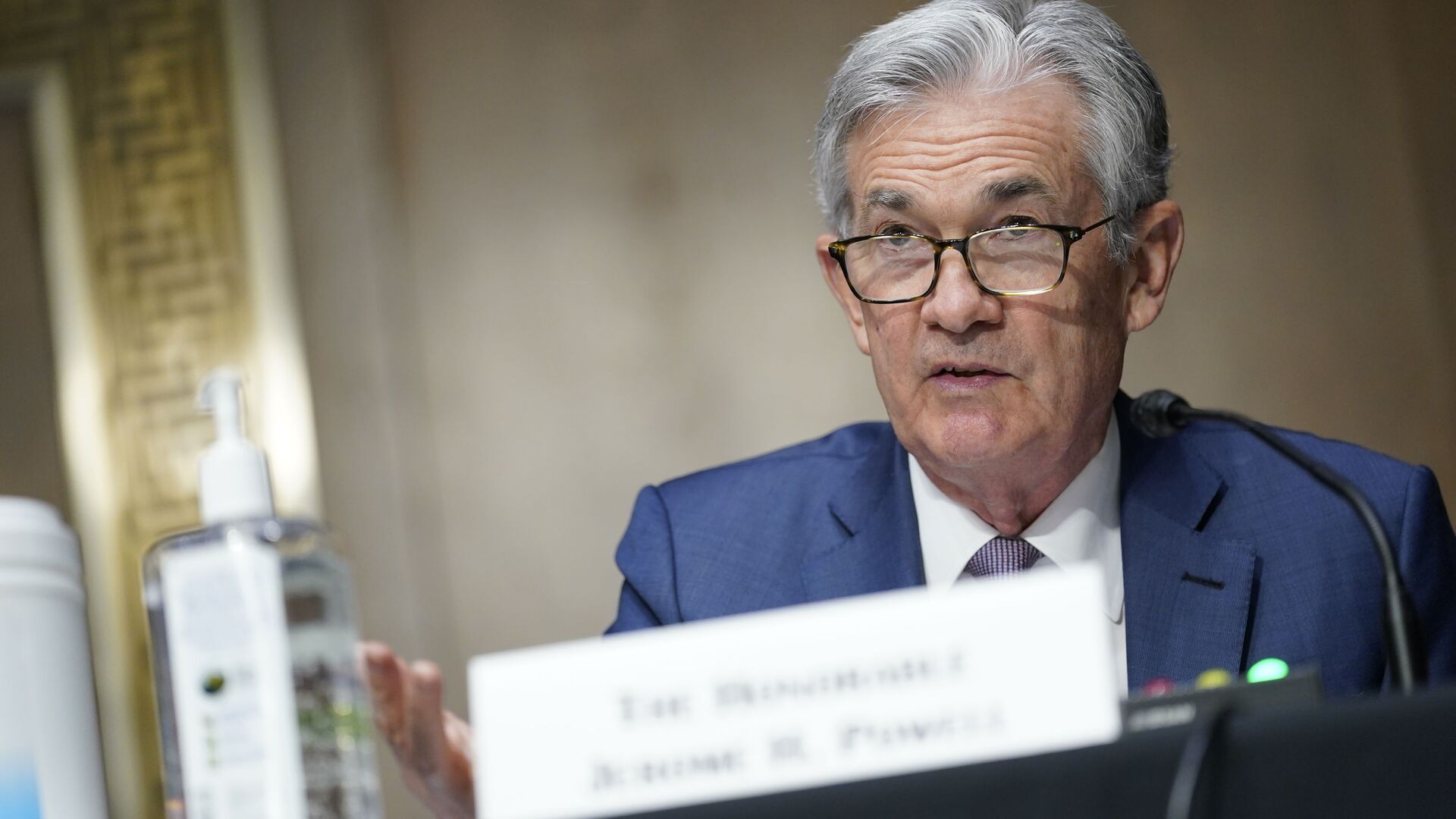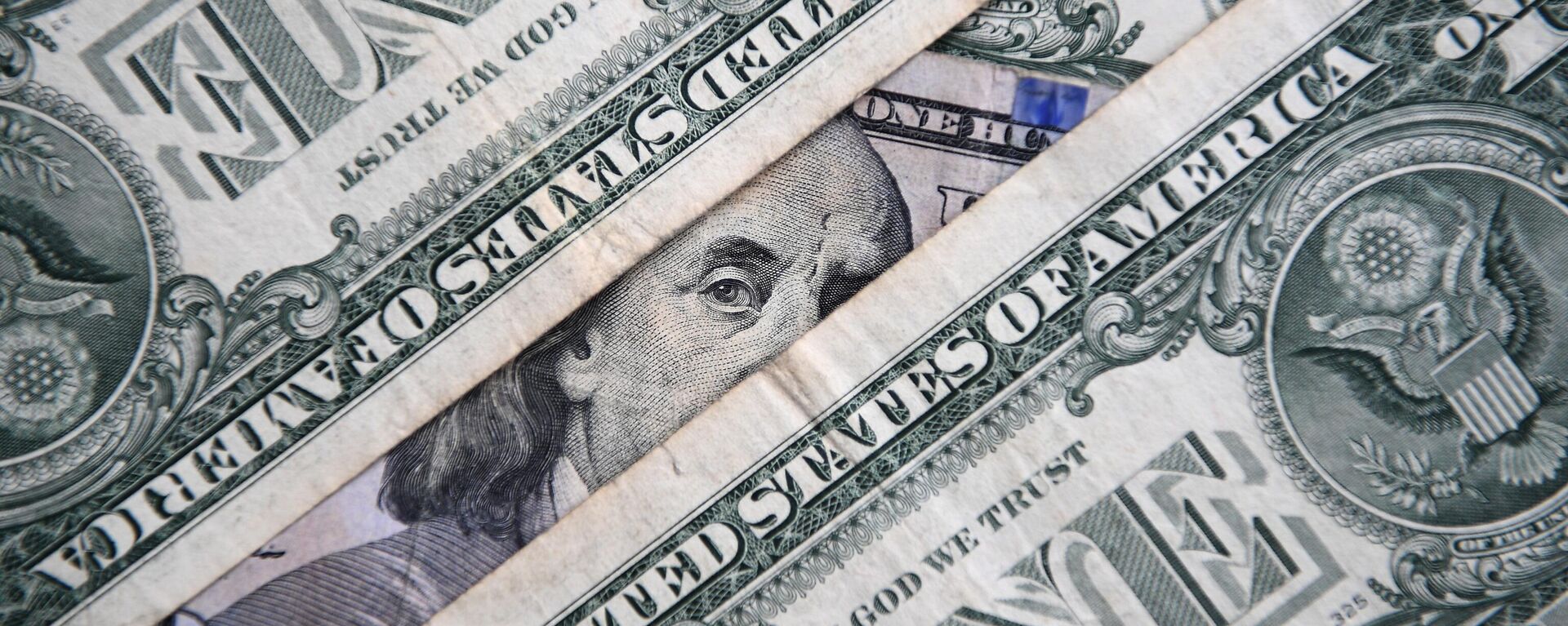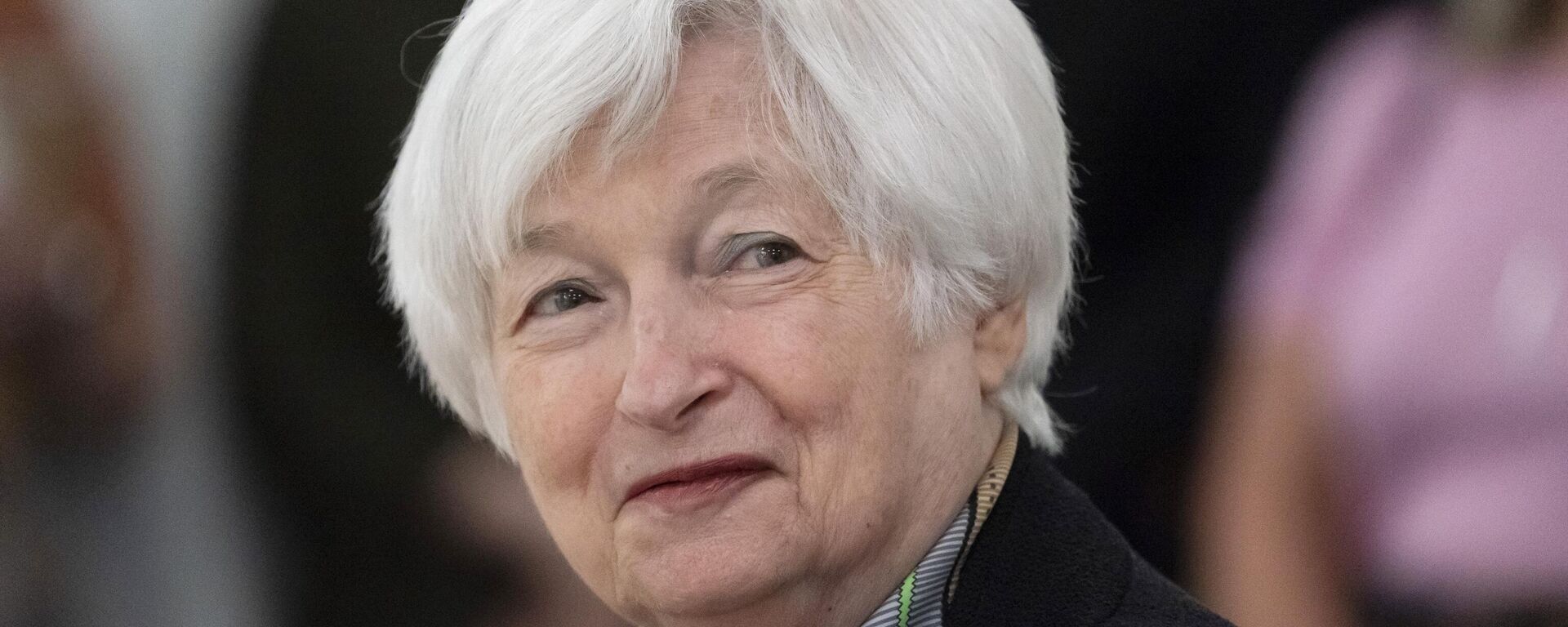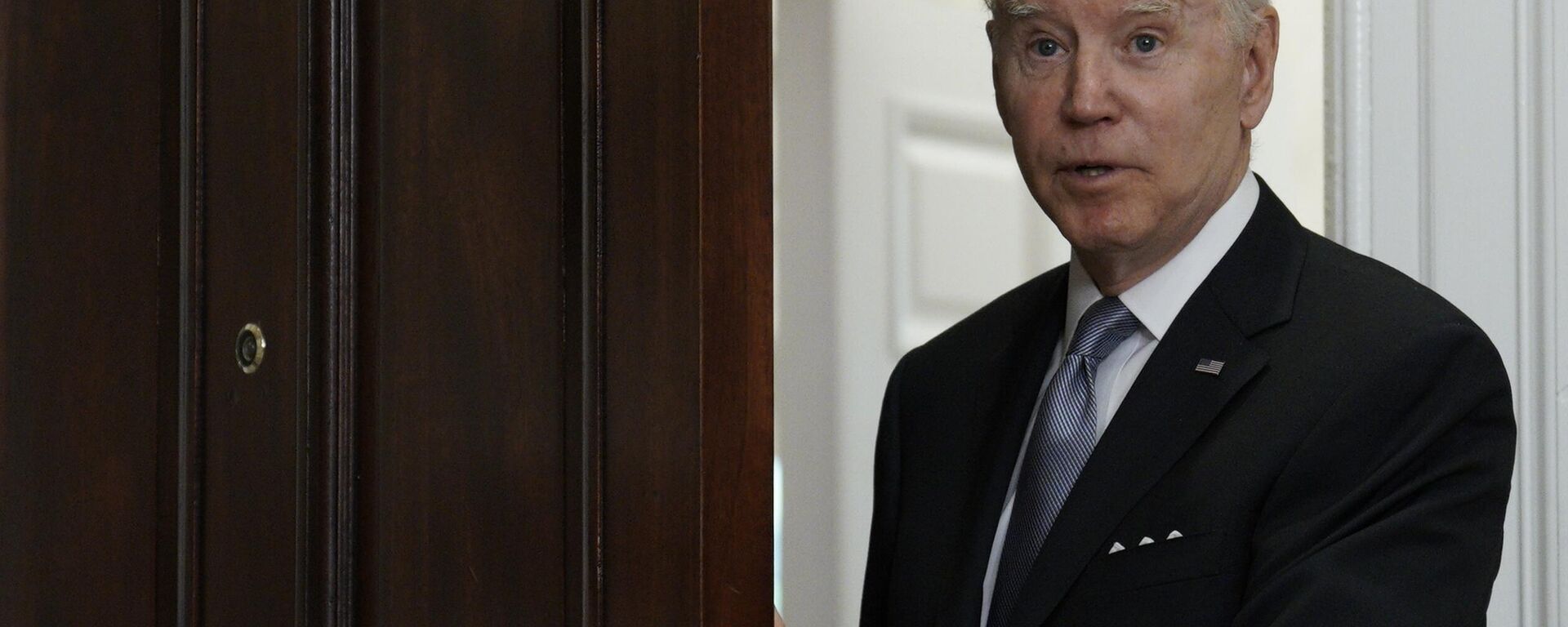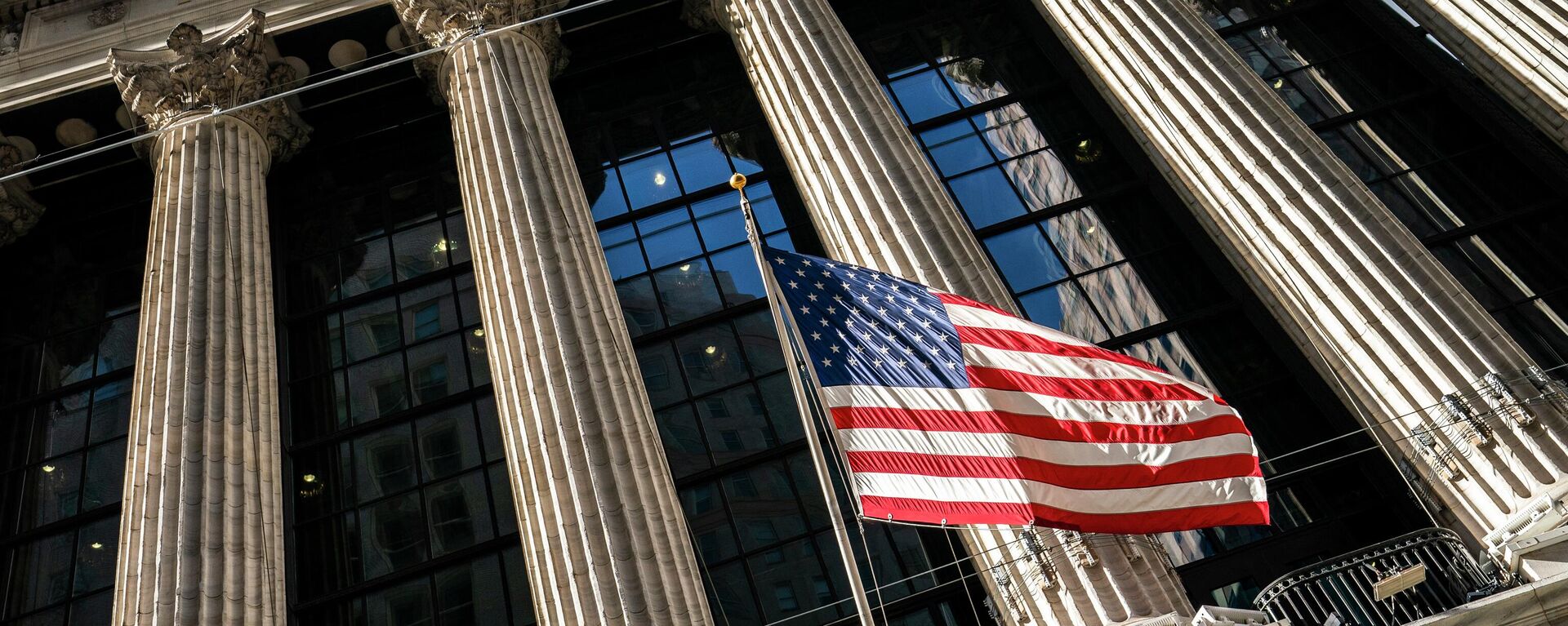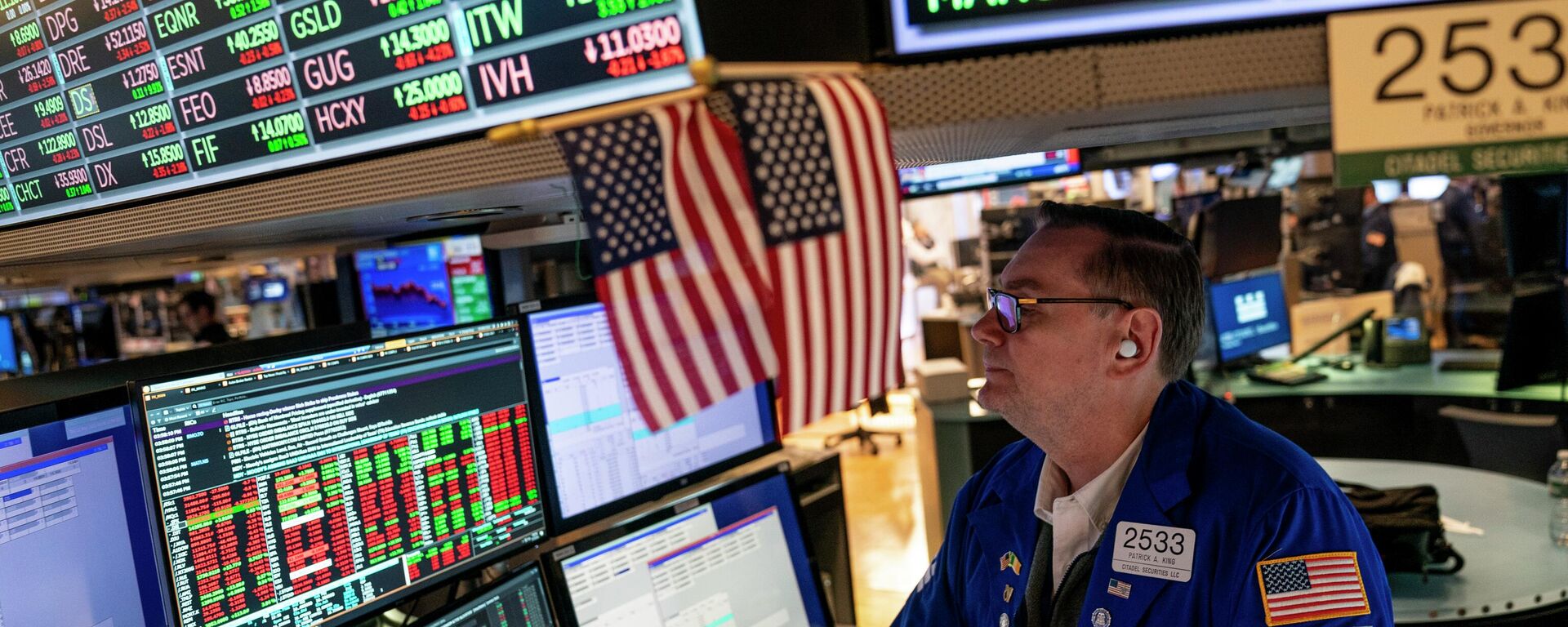https://sputnikglobe.com/20230726/is-the-us-federal-reserve-done-with-hikes---1112161774.html
Is the US Federal Reserve Done With Hikes?
Is the US Federal Reserve Done With Hikes?
Sputnik International
The Fed is widely expected to approve the 11th interest rate hike since March 2022 this on July 26, taking the borrowing rate to its highest level in 22 years. What risks is the move fraught with?
2023-07-26T16:52+0000
2023-07-26T16:52+0000
2023-07-26T16:52+0000
us
sputnik explains
paul craig roberts
jim rogers
jerome powell
federal reserve
us federal open market committee (fomc)
goldman sachs
ukraine
white house
https://cdn1.img.sputnikglobe.com/img/07e5/04/1c/1082754467_0:160:3073:1888_1920x0_80_0_0_dd7317544b085e21c5dbce7ec9444ff5.jpg
Core prices in the US grew 4.8% from a year ago and 0.2% on a monthly basis in June, excluding food and energy. For comparison's sake, inflation peaked at a staggering 9.1% at this time in 2022. Nonetheless, the Federal Reserve is expected to lift interest rates by another quarter of a percentage point at the Federal Open Market Committee (FOMC) meeting on Wednesday.The FOMC's official statement is due to be released at 2 pm (ET), while Chairman Jerome Powell's presser is scheduled for 2:30 pm (ET).How Many Interest Hikes Have There Been Of Late?The US central bank has been increasing interest rates since March 2022 in a bid to tame inflation. So far, the Fed has initiated ten hikes of the benchmark. During the June meeting, the FOMC opted to take a pause with 5%-5.25% interest rates. However, the Federal Reserve chair signaled that at least two more interest-rate hikes are likely necessary in 2023.What's the Federal Reserve's Inflation Target?The Federal Reserve wants to get inflation down to 2%. According to US economists, this week's hike to about 5.3%, will be the last one. Still, this also means that interest rates will stay at this level until well into 2024, which would affect consumer and business loans substantially, given that previously the US central bank's interest rates were near zero.What is the Probability of a Recession in the US?American economists are not quite sure that the Federal Reserve will manage to deliver on its "soft landing" prospect. In August 2022, US economic observers noted that advance estimates for GDP growth in the second quarter of 2022 showed that the nation slid in a "technical recession", which means two consecutive quarters of negative growth.In the beginning of March, Bank of America Chief Executive Officer Brian Moynihan projected a US technical recession in the third quarter of 2023. Still, he suggested that the recession would not be too deep and assumed that interest rates would start falling in the second quarter of 2024."Our base projection is for a recession to occur in the US economy beginning in the third quarter of 2023, occur through the fourth quarter of 2023 and into the first quarter of 2024," Moynihan said. "In our view that is based on a corporate side or a commercial side slowdown, not a consumer side slowdown."A July survey of US economists conducted on behalf of Bloomberg showed that forecasters believe there's a 60% chance of the nation falling into recession in the next 12 months.In contrast, Goldman Sachs reported on July 19, that the probability of a US recession in the coming year has slightly declined. They now say there's a 20% chance of a recession in the next 12 months, down from their projection of 25%.What Does the CPI Fail to Say?The situation with inflation is not as rosy as it seems, as per US economics ad politics professor Jack Rasmus. Speaking to Sputnik on Sunday, the professor highlighted: "Food inflation, even though we've got harvest going on, is 5.7%. Rents are almost 8%. You know, so if you look at services, which is 8% of the economy, that's actually rising. Last month it was 6.2%, the previous month was 5.3%. And we've got OPEC raising crude oil prices now. We got the breakdown of the grain deal there in the Ukraine. We got residential home prices now rising. We got corporations still price gouging. A good example is your bread and bakery companies. General Mills, I think it was, was bragging that they doubled their revenue without selling more bread. Well, the only way you do that is price gouge. So we got price gouging going on and certain indications going that prices are going to rise here now and not go down."What are Other Risks for the US Economy?The collapse of Silicon Valley Bank (SVB), as well as the banks Signature and Silvergate, was largely caused by the Federal Reserve's aggressive rate hikes. If the Federal Reserve continues with this policy, a broader banking crisis will eventually unfold, as Dr. Paul Craig Roberts, an American economist and author who was assistant secretary of the Treasury in the Reagan administration, told Sputnik in March 2023.Another problem is derivatives, as the economist noted at the time. A derivative is a financial contract whose value is dependent on an underlying asset, group of assets, or benchmark."The five largest US banks have derivative exposure many times greater than their capital base. No one knows what the risks in these derivatives are," Dr. Roberts noted. Back in 2002, American business magnate Warren Buffett wrote that derivatives are "financial weapons of mass destruction, carrying dangers that, while now latent, are potentially lethal."What's About the Huge US National Debt?The US administration's spending spree and skyrocketing national debt exacerbated the situation with inflation. The Federal Reserve's aggressive hikes are obviously not enough to fix the US economy, as per Sputnik's interlocutors.Rogers referred to the 1980s, when inflation was similarly bad. At the time, Federal Reserve Chair Paul A. Volcker opted for sharp interest rate hikes that exceeded 19% by January 1981. However, in 1983, the United States was still a creditor nation."Now the United States is the largest debtor nation in the history of the world," he said. "So, sure, things are okay at the moment, but 'at the moment' is not going to last forever. Somebody has got to pay this debt. Somebody has to print more money. Somebody has to borrow more money. And when you borrow huge amounts of money, interest rates will go higher and higher, inflation will go higher because so much money has been printed."
https://sputnikglobe.com/20230613/federal-reserve-boss-faces-dilemma-with-us-economy-not-out-of-the-woods-1111118386.html
https://sputnikglobe.com/20230504/debt-ceiling-battle-and-federal-reserve-interest-hikes-could-wreck-us-economy-1110096898.html
https://sputnikglobe.com/20230710/treasury-secretary-yellen-says-cannot-rule-out-recession-in-us-1111779244.html
https://sputnikglobe.com/20230723/bidenomics-driving-us-economy-into-dead-end-1112094427.html
https://sputnikglobe.com/20230317/recession-insolvency-derivative-risks-why-looming-us-crisis-could-be-worse-than-in-2008-1108517439.html
https://sputnikglobe.com/20230702/jim-rogers-de-dollarization-fuelled-by-soaring-us-debt-1111626237.html
https://sputnikglobe.com/20230715/us-inflation-may-not-retreat-easily-as-consumer-sentiment-near-2-year-high---survey-1111884146.html
ukraine
Sputnik International
feedback@sputniknews.com
+74956456601
MIA „Rossiya Segodnya“
2023
News
en_EN
Sputnik International
feedback@sputniknews.com
+74956456601
MIA „Rossiya Segodnya“
Sputnik International
feedback@sputniknews.com
+74956456601
MIA „Rossiya Segodnya“
us federal reserve, us fed reserve, federal open market committee, fomc, federal reserve chair jerome powell, us interest rate hikes, us interest rate increases, us inflation, cpi, pce, fed reserve skipped hike, is us fed reserve done with hikes, soft landing, prospect of us recession, probability of us recession, us enters in technical recession, what is technical recession, us national debt, us government deficit, dedollarization, dedollarisation
us federal reserve, us fed reserve, federal open market committee, fomc, federal reserve chair jerome powell, us interest rate hikes, us interest rate increases, us inflation, cpi, pce, fed reserve skipped hike, is us fed reserve done with hikes, soft landing, prospect of us recession, probability of us recession, us enters in technical recession, what is technical recession, us national debt, us government deficit, dedollarization, dedollarisation
Is the US Federal Reserve Done With Hikes?
The Fed is widely expected to approve the 11th interest rate hike since March 2022 this on July 26, taking the borrowing rate to its highest level in 22 years. What risks is the move fraught with?
Core prices in the US grew 4.8% from a year ago and 0.2% on a monthly basis in June, excluding food and energy. For comparison's sake, inflation peaked at a staggering 9.1% at this time in 2022.
Nonetheless, the Federal Reserve is expected to lift interest rates by another quarter of a percentage point at the Federal Open Market Committee (FOMC) meeting on Wednesday.
The FOMC's official statement is due to be released at 2 pm (ET), while Chairman Jerome Powell's presser is scheduled for 2:30 pm (ET).
How Many Interest Hikes Have There Been Of Late?
The US central bank has been increasing interest rates since March 2022 in a bid to tame inflation. So far, the Fed has initiated ten hikes of the benchmark.
During the June meeting, the FOMC opted to take a pause with 5%-5.25% interest rates. However, the Federal Reserve chair signaled that at least two more interest-rate hikes are likely necessary in 2023.
"A strong majority of committee participants expect that it will be appropriate to raise interest rates two or more times by the end of the year," Powell said on June 29. "Inflation pressures continue to run high, and the process of getting inflation back down to 2% has a long way to go."
What's the Federal Reserve's Inflation Target?
The Federal Reserve wants to get inflation down to 2%. According to US economists, this week's hike to about 5.3%, will be the last one. Still, this also means that interest rates will stay at this level until well into 2024, which would affect consumer and business loans substantially, given that previously the US central bank's interest rates were near zero.
What is the Probability of a Recession in the US?
American economists are not quite sure that the Federal Reserve will manage to deliver on its "soft landing" prospect. In August 2022, US economic observers noted that advance estimates for GDP growth in the second quarter of 2022 showed that the nation slid in a "technical recession", which means two consecutive quarters of negative growth.
In the beginning of March, Bank of America Chief Executive Officer Brian Moynihan projected a US technical recession in the third quarter of 2023. Still, he suggested that the recession would not be too deep and assumed that interest rates would start falling in the second quarter of 2024.
"Our base projection is for a recession to occur in the US economy beginning in the third quarter of 2023, occur through the fourth quarter of 2023 and into the first quarter of 2024," Moynihan said. "In our view that is based on a corporate side or a commercial side slowdown, not a consumer side slowdown."
A July survey of US economists conducted on behalf of Bloomberg showed that forecasters believe there's a 60% chance of the nation falling into recession in the next 12 months.
In contrast, Goldman Sachs reported on July 19, that the probability of a US recession in the coming year has slightly declined. They now say there's a 20% chance of a recession in the next 12 months, down from their projection of 25%.
"The inflation data have been encouraging. The 0.16% increase in the CPI (excluding food and energy) in June was the lowest since February 2021 and follows a string of 0.4% readings this year," Goldman Sachs reported, adding that the CPI - a common gauge for inflation - and Personal Consumption Expenditures (PCE) price index have been easing for quite a while.
What Does the CPI Fail to Say?
The situation with inflation is not as rosy as it seems, as per US economics ad politics professor Jack Rasmus.
Speaking to Sputnik on Sunday, the professor highlighted: "Food inflation, even though we've got harvest going on, is 5.7%. Rents are almost 8%. You know, so if you look at services, which is 8% of the economy, that's actually rising. Last month it was 6.2%, the previous month was 5.3%. And we've got OPEC raising crude oil prices now. We got the breakdown of the grain deal there in the Ukraine. We got residential home prices now rising. We got corporations still price gouging. A good example is your bread and bakery companies. General Mills, I think it was, was bragging that they doubled their revenue without selling more bread. Well, the only way you do that is price gouge. So we got price gouging going on and certain indications going that prices are going to rise here now and not go down."
What are Other Risks for the US Economy?
The collapse of Silicon Valley Bank (SVB), as well as the banks Signature and Silvergate, was largely caused by the Federal Reserve's aggressive rate hikes. If the Federal Reserve continues with this policy, a broader banking crisis will eventually unfold, as Dr. Paul Craig Roberts, an American economist and author who was assistant secretary of the Treasury in the Reagan administration, told Sputnik in March 2023.
"If this policy continues more banks will be pushed into insolvency, and there will be a banking crisis," Dr. Roberts said. "The reason the Federal Reserve's policy is pushing banks into insolvency is that during the decade of low interest rates, the financial assets acquired by banks that are their assets, such as bonds, have lower interest rates than current interest rates. When interest rates rise, existing financial assets with lower interest rates fall in value, thus reducing the asset side of banks' balance sheets, but the liabilities side does not decline."
Another problem is derivatives, as the economist noted at the time. A derivative is a financial contract whose value is dependent on an underlying asset, group of assets, or benchmark.
"The five largest US banks have derivative exposure many times greater than their capital base. No one knows what the risks in these derivatives are," Dr. Roberts noted. Back in 2002, American business magnate Warren Buffett wrote that derivatives are "financial weapons of mass destruction, carrying dangers that, while now latent, are potentially lethal."
What's About the Huge US National Debt?
The US administration's spending spree and skyrocketing national debt exacerbated the situation with inflation. The Federal Reserve's aggressive hikes are obviously not enough to fix the US economy, as per Sputnik's interlocutors.
"I would concur that the worst is yet to come," renowned US investor Jim Rogers told Sputnik in early July. "I do not agree with the White House that everything is okay now. To look back at previous inflation anywhere in the world, you will see it goes up, down, up, down. This is the way markets work. (…) We have printed a lot of money, we have borrowed and spent a lot of money, which is wonderful for the short term, but eventually we have to pay the price. Inflation is going to get worse. The debt problems are going to get worse."
Rogers referred to the 1980s, when inflation was similarly bad. At the time, Federal Reserve Chair Paul A. Volcker opted for sharp interest rate hikes that exceeded 19% by January 1981. However, in 1983, the United States was still a creditor nation.
"Now the United States is the largest debtor nation in the history of the world," he said. "So, sure, things are okay at the moment, but 'at the moment' is not going to last forever. Somebody has got to pay this debt. Somebody has to print more money. Somebody has to borrow more money. And when you borrow huge amounts of money, interest rates will go higher and higher, inflation will go higher because so much money has been printed."
"That will happen to the US. It won't happen this year, but it will happen," Rogers concluded.
